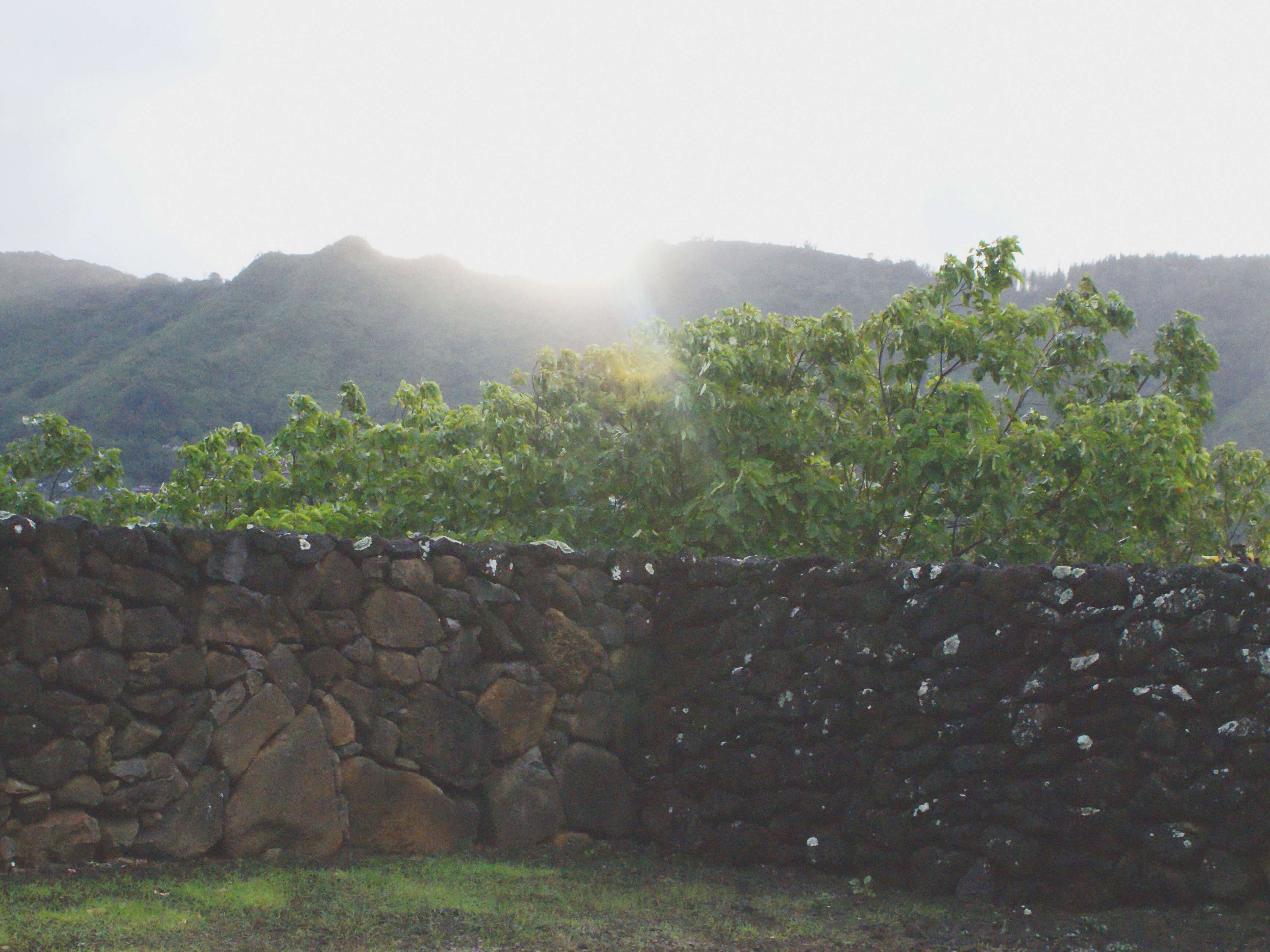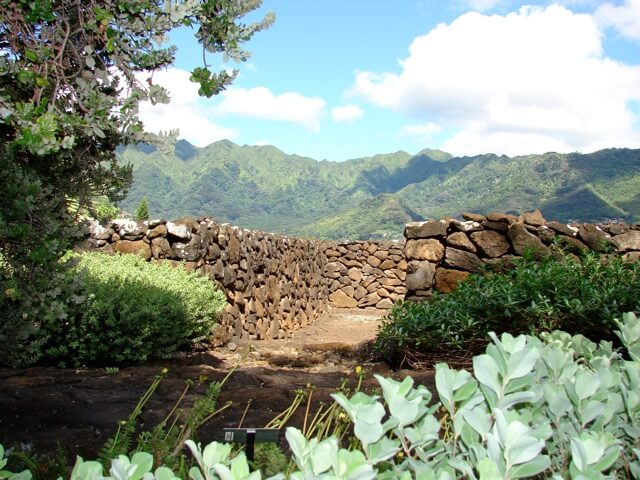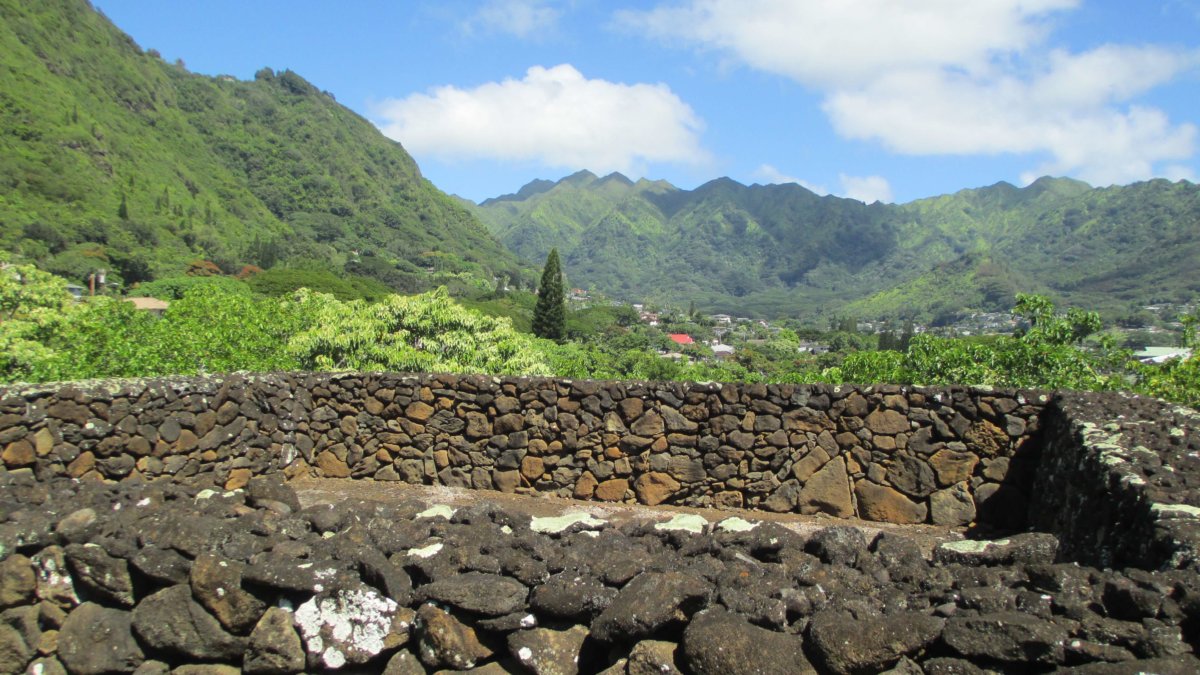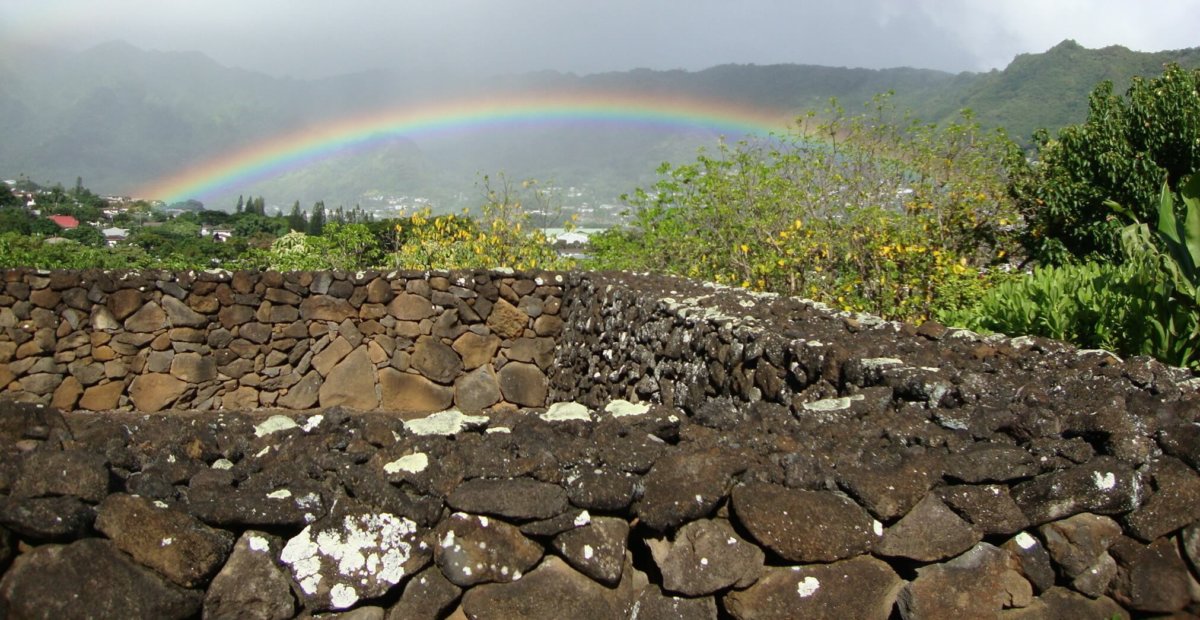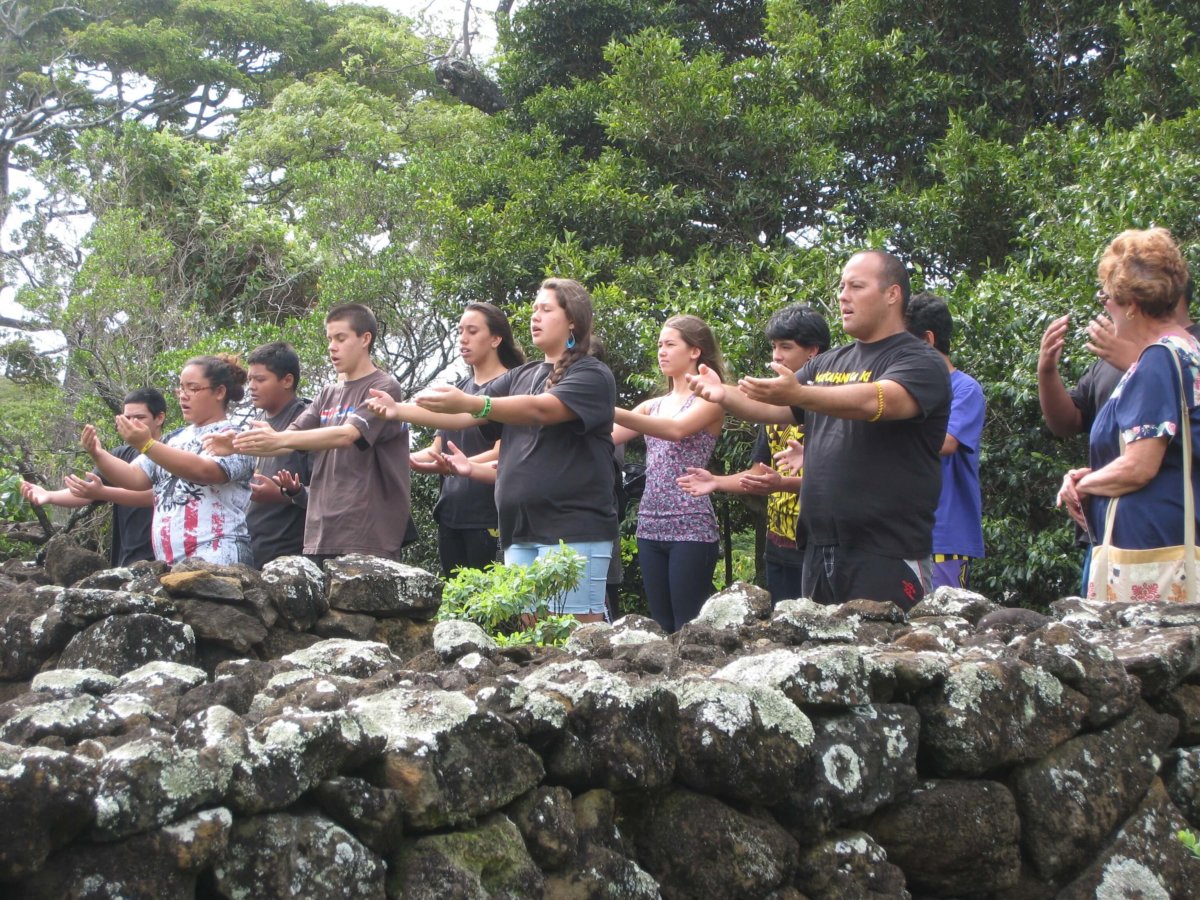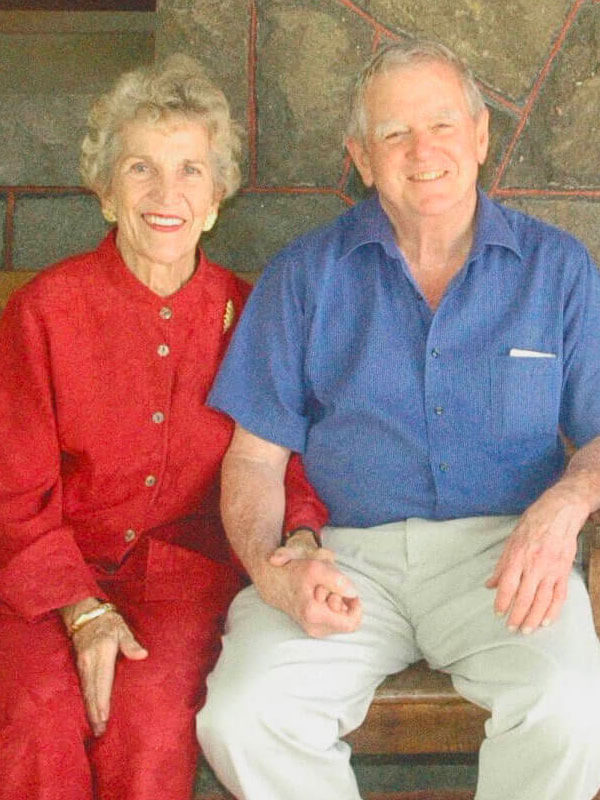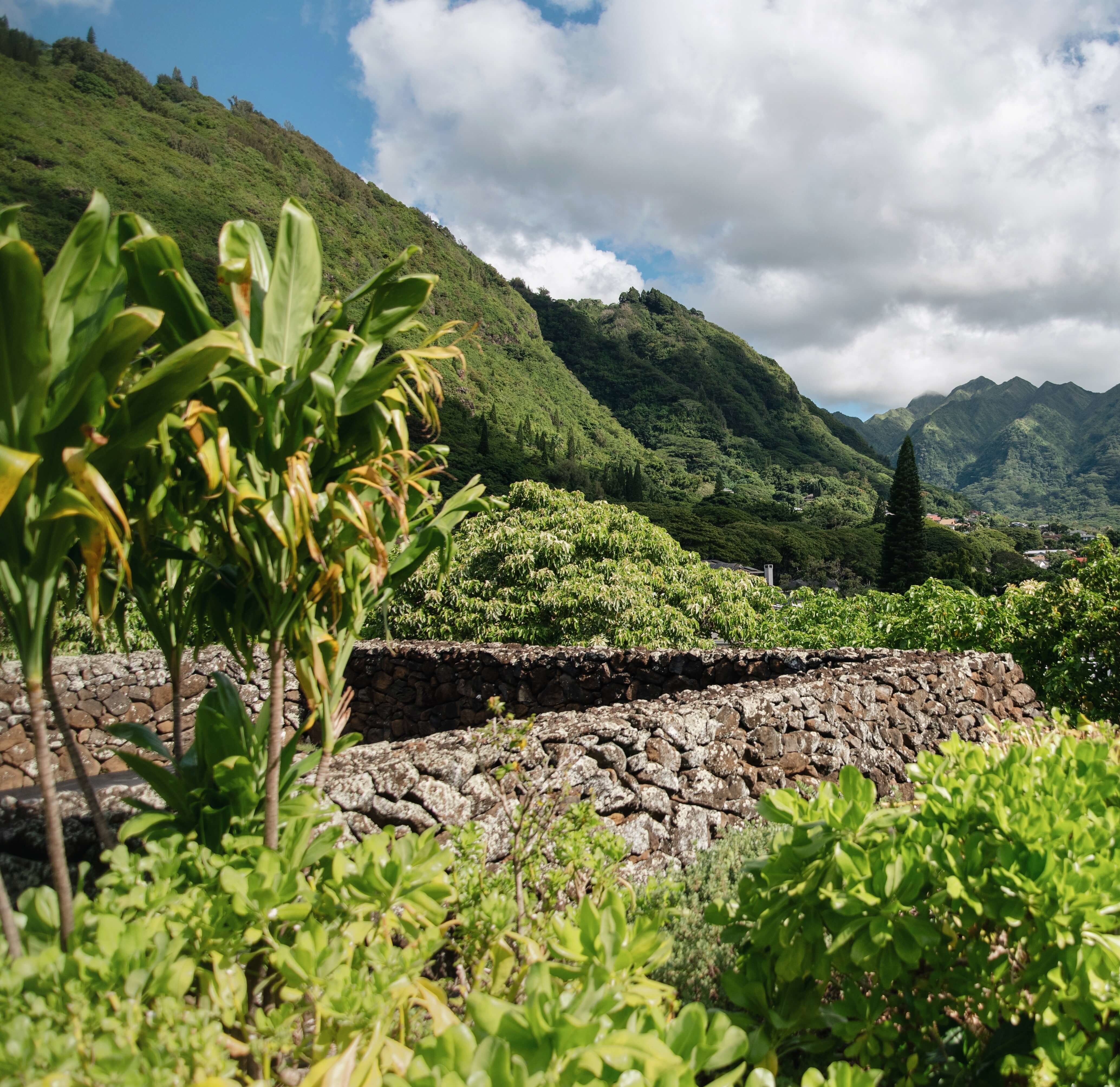Kūkaʻōʻō Heiau
Ke kipona pilina
i Mānoa nei
The powerful tie to this place, Mānoa
Mānoa, meaning “broad” or “vast,” is an apt description for this wide, lush valley. Agricultural pursuits were possible thanks to an abundance of fresh water (wai) available from the Koʻolau Range. Water was a precious, sacred gift and Hawaiians recognized the importance of conserving it, even naming the different rains of a locale to signify their value and characteristics. There are many Hawaiian proverbs that speak to the importance of rain in Mānoa. Under the direction of a land manager (konohiki), wetland taro (kalo) farmers and community members created a complex network of ditches (‘auwai) to regulate stream flow and irrigate their kalo fields (lo‘i). The konohiki would also oversee daily water distribution.
Kūka‘ō‘ō Heiau, an ancient temple attributed to menehune, sits high above the Mānoa Valley floor, the sacred site would have overlooked a patchwork of wetland taro fields (lo‘i kalo). Breadfruit, banana and sweet potato were also cultivated in fertile Mānoa Valley. One can imagine farmers (mahi‘ai) looking up at the heiau with reverence. In the center of what was once an agricultural region, Kūka‘ō‘ō is considered a māpele heiau, dedicated to Lono, god of agriculture, rain and fertility.
Kūka‘ō‘ō is translated a few different ways, all having to do with agriculture:
Kūka‘ō‘ō – Kū (a Hawaiian god) of the digging stick (ka ‘ō‘ō)
Kūkao‘o – Kū (deity) of mature growth (ka o‘o)
Kūkao‘o – achievement of maturity
Kūka‘ō‘ō – The digging stick stands upright
In 1911, Monte rejected architect Walter Emory’s plans to build Kūaliʻi on the site of Kūka‘ō‘ō Heiau. From an architect’s perspective, the heiau’s location afforded the best views from the uplands of Mānoa Valley to the coastline of Waikīkī and Diamond Head. However, Monte insisted that his future residence be built a respectful distance from the heiau reinforcing a Cooke family legacy of stewardship and preservation.
Restored in 1993 by expert Hawaiian dry-stack mason, Billy Fields, Kūkaʻōʻō Heiau survives as the last remaining intact Hawaiian temple in the greater ahupua‘a of Waikīkī and remains a remarkably timeless link to the past. “He did a magnificent job of repairing and restoring Kūkaʻōʻō using only stones associated with the site.” noted Nathan Nāpōkā, Mānoa Heritage Center Protocol Committee member and well-respected Hawaiian cultural practitioner.
This 3D LiDAR scan of Kūka‘ō‘ō Heiau was completed by 11th and 12th grade students of the 2016-2017 Historical Preservation class at Mid-Pacific Institute. As the only K-12 school in the world using LiDAR for reality capture and historic preservation, this scan allows visitors from around the world to virtually experience this sacred site (wahi pana).
